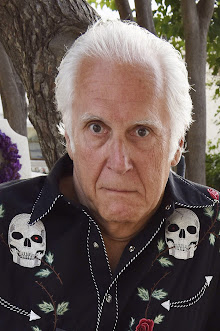For the most part, there is little good to say about the colonial powers’ behaviour in Africa. It was avaricious, brutal, and racist. However, there are a few stories that have a reasonably happy ending – probably more by chance than design – but nevertheless worth reporting. One of these stories is about Botswana, home of the intrepid detectives “Kubu” Bengu and Precious Ramotswe.
 |
| Jan van Riebeeck |
From 1652, when Jan van Riebeeck landed at the Cape to establish a vegetable garden to replenish the Dutch East India Company ships en route to the Far East, until the early 1800s, when the English took over the Cape to protect their sea routes to the Far East from the French, the White population in the southern tip of Africa was largely Dutch, French, and German. They enjoyed the use of slaves, both local (usually Hottentot) as well from Indonesia and other Far Eastern countries. For the most part, the black tribes had not yet reached the Cape, but were settled 500 miles to the east.
 |
| Trek Boers |
When the English took over the Cape, they began to Anglicize the area and outlawed slavery. In reaction to this and because the Cape was becoming less appealing due to an increase in immigrants and wars with Black tribes on the eastern frontier, many Dutch farmers left the Cape in search of their own land, free from English interference. This resulted in the Great Trek – a watershed in southern African history. From 1836 groups of Boers (farmer in Dutch) spread throughout what is now South Africa, establishing many independent states, the most important of which were the Orange River Republic (Orange Free State), roughly between the Orange and Vaal rivers, and the South African Republic, more or less between the Vaal and Limpopo rivers.
Much of this was accomplished by force – the muskets of the Boers being far more effective than the stabbing spears of the various Black tribes. It was also accomplished by making expedient treaties with local chiefs, who rarely understood what they were signing. Duplicity was rife, with the Boers often ignoring treaties when it suited them, and chiefs giving the Boers access to lands that didn’t belong to their communities. In addition, there was a major cultural difference, in that the Europeans were used to having freehold title to land, whereas the Black tribes occupied land communally, with the chief having the power to grant use.
 |
| Queen Victoria |
Even though most of the land west of the two Boer Republics was desert, there were incursions by Boers looking for more land, as well as attacks on the Tswana tribe by the Ndebele from the north east. Three Batswana chiefs, Khama III, Bathoen, and Sebele went to London and asked Queen Victoria to protect them with ‘the great white queen’s blanket’. This resulted in England granting a protectorate over the area in March 1885, which became known as the Bechuanaland Protectorate. Part of the Protectorate became British Bechuanaland and was eventually annexed to the Cape Colony, and the Protectorate was enlarged in 1890 to the current size of Botswana. An unusual and perhaps unique aspect of British control over the Bechuanaland Protectorate was that all administration was done in Mafeking, which is not in the country at all, but in South Africa. Are there any other countries where the de facto government was situated in a neighbouring country?
England and the Boers went to war at the end of the Nineteenth Century, and eventually in 1910 the two former Boer Republics, the Cape and Natal colonies united to form the Union of South Africa. The Bechuanaland Protectorate and two other areas under British control, Basutoland (now Lesotho, and Swaziland, were specifically excluded, although provision was made for their inclusion into South Africa. England dragged its feet with respect to the inclusion, particularly when the Nationalist Party took power in South Africa in 1948, beginning the era of official apartheid.
As the winds of change blew through the continent, Britain felt the pressure to grant independence to its colonies and to countries it administered. On September 30, 1986, the Bechuanaland Protectorate became the independent country of Botswana, headed by Seretse Khama and his White English wife, Ruth Williams.
 |
| Sir Seretse Khama |
At independence, Botswana was very poor – one of the poorest countries in Africa with a per capita GDP of about US$70. Today, it is one of the successes in Africa with a per capita GDP of US$6400, largely due to the discovery of diamonds. The first great mine, Letlhakane near Orapa, was founded in 1972 and started operations in 1977. Jwaneng is the biggest of the mines, coming into operation in 1982. All the major mines are owned by Debswana, a 50-50 joint operation of the Botswana government and De Beers.
Facts and figures:
Population (2009): 1,900,000 (146th in the world)
Population density: 3.4/sq. km. (8.9/sq. Mile) (229th in the world – 10th last)
Size: 580,000 sq. km (225,000 sq. miles) of which 2.3% is covered with water (the Okavango Delta)
Capital: Gaborone
Government: Parliamentary republic
Currency: 1 pula = 100 thebes (pula means ‘rain’ in Setswana) (US$1 = 7 pula approximately)
Wildlife: Spectacular
Queen Victoria and a desolate landscape probably saved Bechuanaland from the grasp of Westerners. Had they known about the diamonds, the story would have been different. It is a land worth visiting with spectacular game reserves and friendly people.
Stan -Thursday






















